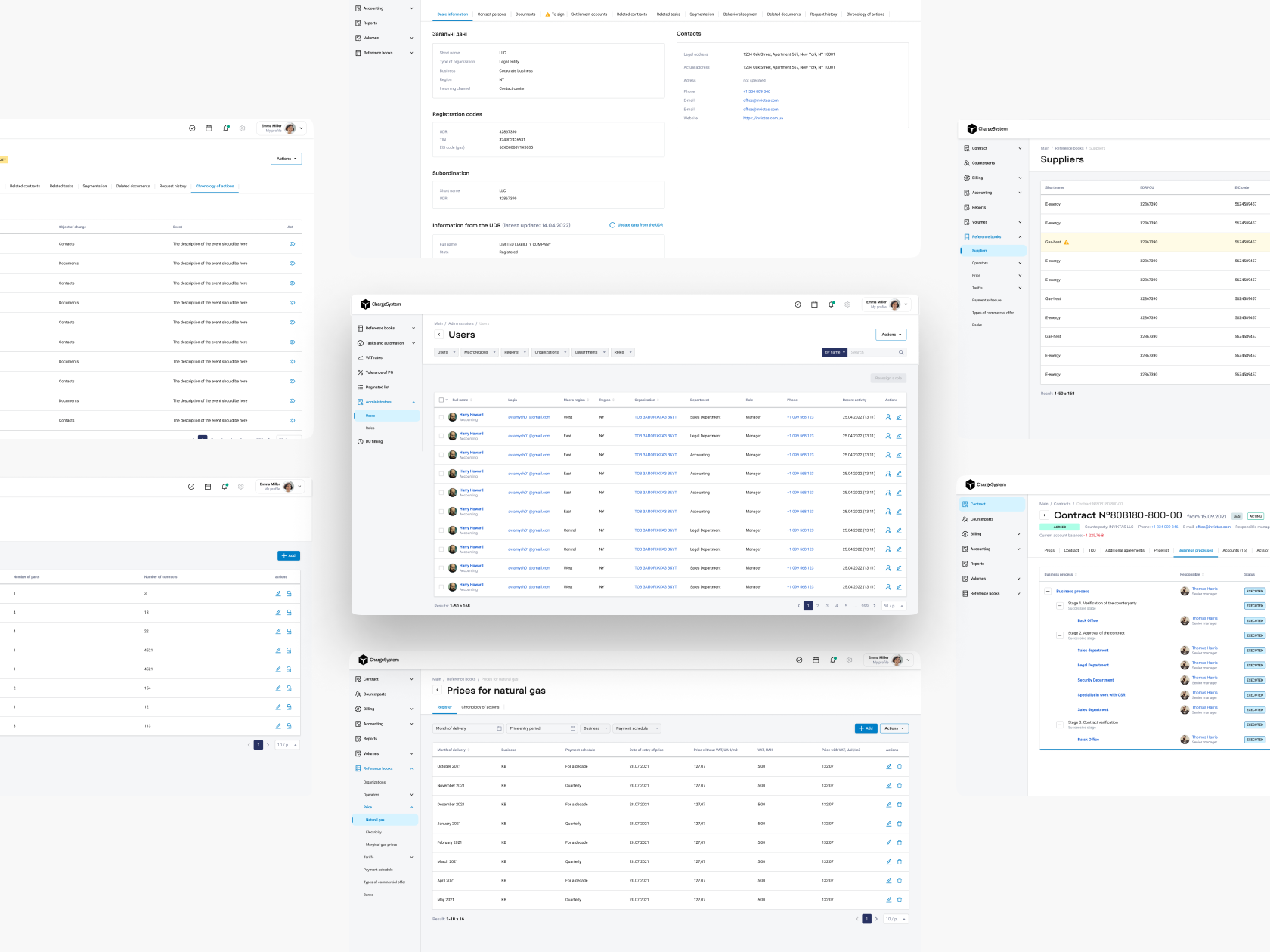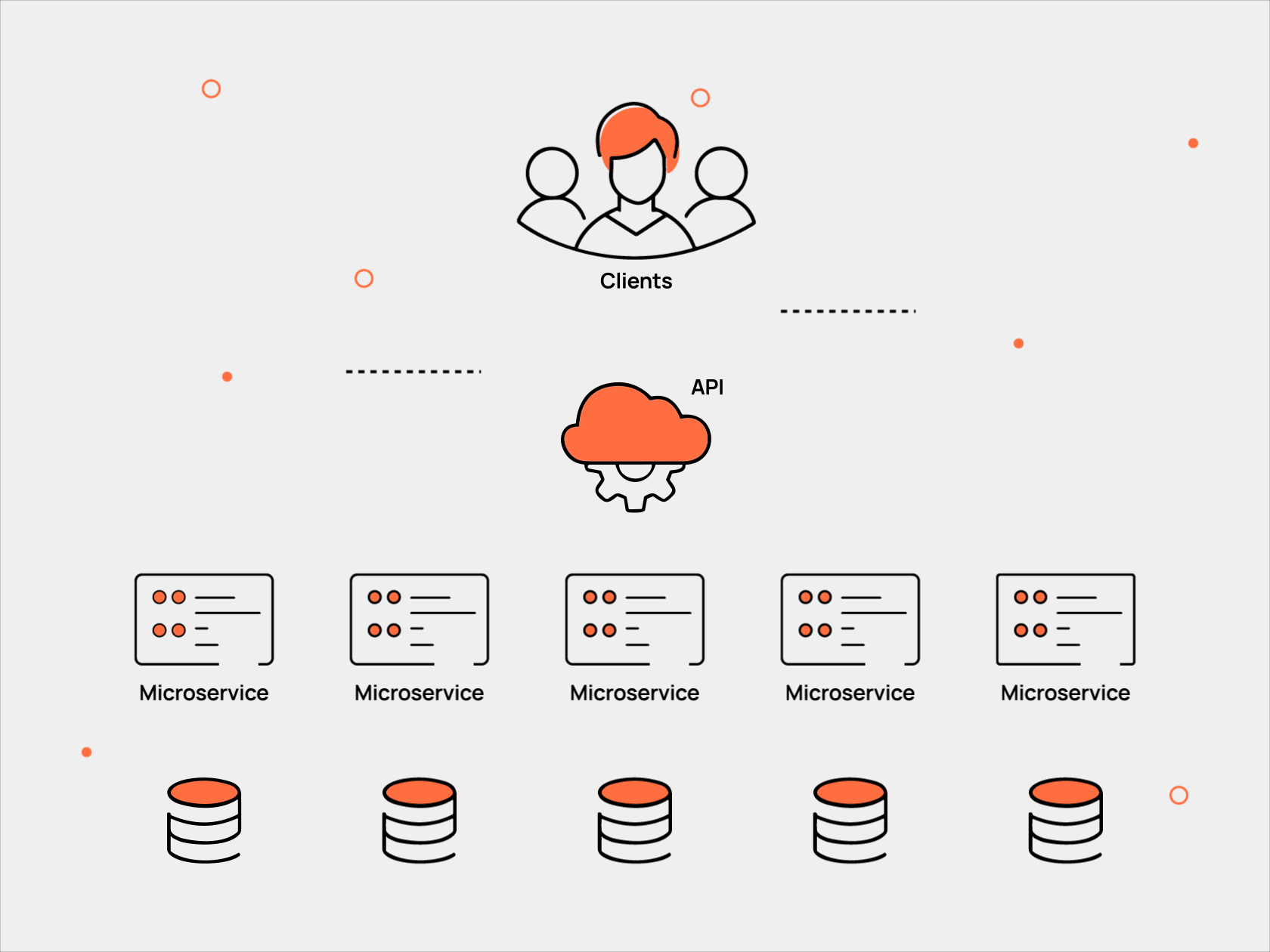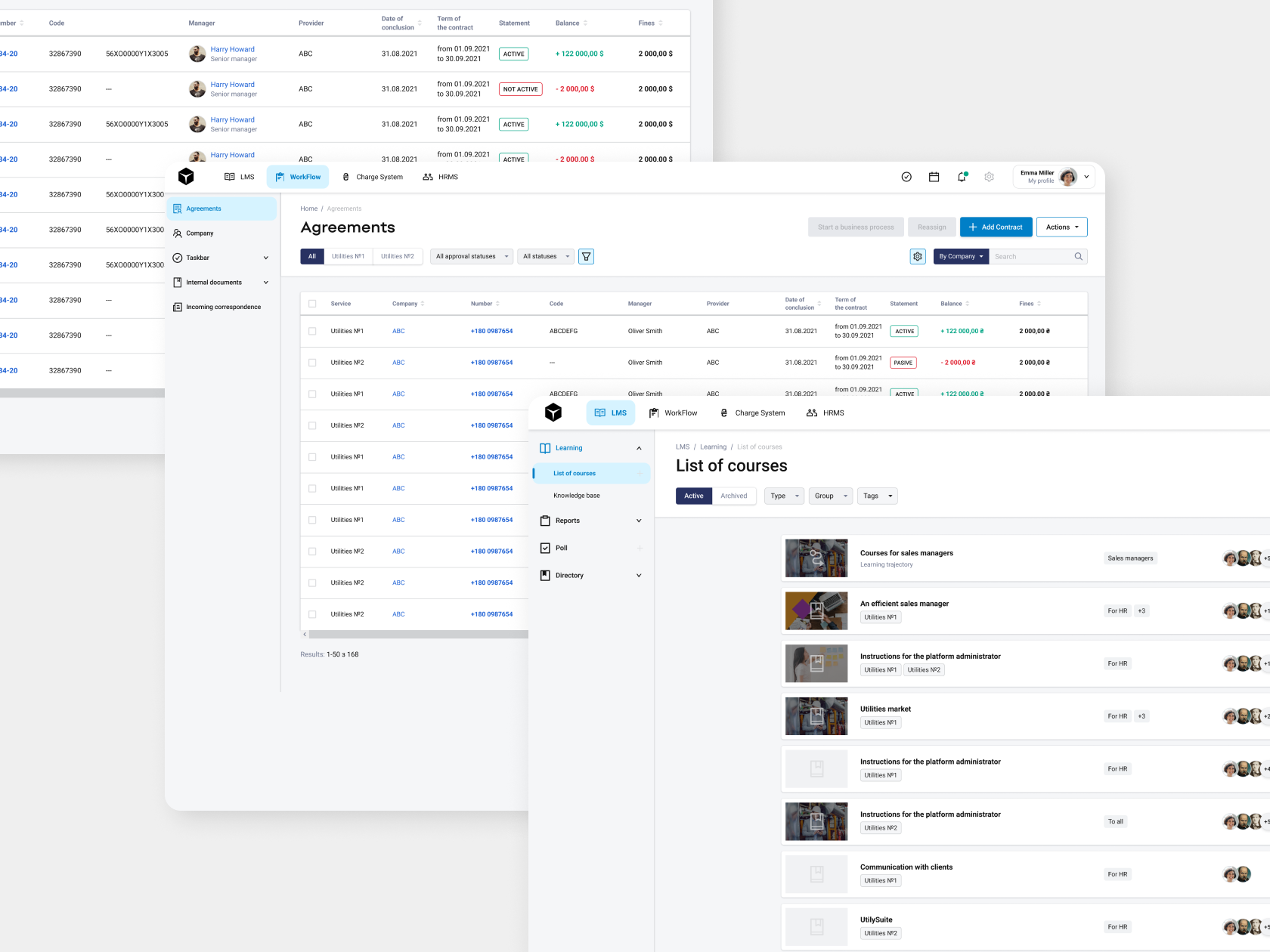Companies whose activities involve the gradual expansion of their IT infrastructure may experience difficulties associated with downtime and costs at each successive stage of its scaling. In practice, they cannot rely on monolithic solutions anymore as they become more and more expensive to update and maintain. So is there any cost-effective and least resource-intensive solution? Of course – that’s why microservice architecture emerged.
Specifically, according to the Allied Market Research data, the global microservices architecture market size was valued at $2,073 million in 2018 and is projected to reach $8,073 million by 2026, which means its increase in popularity over the years. So, should you adopt this type of architecture or not? Let’s find it out below, as well as consider a particular example of its successful implementation.
What Are Microservices?
Let’s start with a definition. In a nutshell, microservice software architecture (or, briefly, microservices) is a type of IT architecture based on independent microservices deployment. These services have their own business logic and database with a specific purpose. At the same time, such procedures as updating, testing, deploying, and scaling are performed within each service without affecting the others.
Microservices imply breaking down large business-specific tasks into multiple independent code bases. Microservices don't reduce the complexity of the whole system but make it more manageable by dividing tasks into smaller processes operating independently of each other.
The implementation of microservices is often closely related to DevOps, as it underpins a continuous delivery methods that allows development teams and whole IT departments to quickly adapt to user requirements.
How Does Microservices Architecture Work?
Microservice architecture aims to provide manageability to large, resource-intensive applications. Since each individual microservice performs one narrowly focused task (application function), they can be updated independently of other components. Thus, scaling and changing existing functionality is carried out with minimal resource consumption and downtime.
As for the principles of operation of a separate microservice, it lies in the fact that when a client generates a request with the help of the user interface, which, through the API gateway, activates the microservice (or several of them) responsible for executing this request.
Thus, even the most complex multi-stage tasks can be implemented with the least resource consumption. At the same time, a combination of various microservices gives companies access to solving a wide variety of problems without requiring the implementation of full-fledged software components with independent interfaces.

Microservices vs. Monolithic Architecture
Microservice architecture is a type of service-oriented software architecture that ensures the interaction of small, loosely coupled, and easily changeable modules that are independent of each other. Monolithic architecture is a single module that operates autonomously, standing alone from other applications.
For large-scale businesses with a lot of dispersed offices and a large number of digitized business processes, microservices design patterns are the best choice, while monolithic solutions are mainly used to automate tasks in non-scalable organizations.
In turn, a monolithic architecture is a separate large computing network with a single code base in which all business tasks are combined. To make changes to such an application, you need to update the entire stack through the code base and create and deploy an updated version of the service-side interface. This limits the work with updates and takes a lot of time.
At the same time, monoliths are useful in the early stages of projects to make deployment easier and avoid spending too much effort managing the code. This allows you to implement everything in a monolithic application at once.
What Are The Key Benefits of Microservices Architecture?
Overall, microservices architecture provides a number of benefits that make it attractive for developing and managing large, complex applications. Let's check at its advantages in more detail.
- IT infrastructure scalability. Microservices can be scaled independently of each other. This means you can allocate more resources to specific parts of your application that need more performance without having to scale the entire application.
- Development flexibility. Microservices allow development teams to work on small and independent components. This makes it easier for these teams to develop, test, and deploy, and expands their choice of technologies and tools that best suit their specific needs.
- Fast deployment. Changes to a single microservice can be quickly deployed without having to rebuild the entire application. This allows teams to quickly respond to changes in market requirements and eliminate errors.
- Isolated fault tolerance. If one microservice stops working, it doesn't mean the whole application fails, as other microservices can continue to function independently.
- Ease of making changes. Changing functionality or technology in one microservice does not affect other parts of the application. This promotes innovation and renewal.
- Team extensibility. Teams can be divided into microservices, making them easier to manage and expand. Each team can specialize in its own area of responsibility.
- Ease of development using different technology stacks. Different microservices can be implemented using different programming languages and technologies, which allows developers to choose the most suitable solutions for specific tasks.
- Quickl scaling with elimination of bottlenecks. Microservices allow teams to scale and optimize individual system components with minimum effort, which improves productivity and efficiency.
- Simplified testing. The independence of microservices makes testing easier because each microservice can be tested separately.
- Ease of support and updates. Updating one microservice does not affect the others, making support and versioning simpler.

What Is The Microservices Architecture Used for?
The main cases for using microservice architecture are the following:
- Processsing large amounts of data without sacrificing performance
- Placing media content that would be broadcast without freezes and delays
- Website migration without downtime
- Developing transactions and invoice applications that need to maintain certain security standards (which can be resource-intensive for the rest of the application that does not handle sensitive user data)

Microservices Tools
The technology stack for developing microservices is quite large and consists of several components:
- Operating system. Typically, developers use Linux for these purposes, which provides them with an autonomous and secure environment for executing program code;
- Programming languages. Most often, Java is used to develop microservices, but ultimately, it all depends on other tools and technologies;
- API management and testing tools. Since not all APIs are standardized, for their effective and correct operation, additional tools may be required – it’s needed to ensure their management and testing for the correctness of completed tasks;
- Messaging tools. Tools like Rabbit MQ and Apache Kafka enable microservices to seamlessly communicate with each other;
- Toolkits and frameworks. Toolkits and frameworks take a direct part in application development, making this task easier for developers;
- Orchestration tools. They are necessary for fast automated launch of a microservice architecture;
- Monitoring tools. These solutions help monitor the correct functioning of already running microservices to promptly prevent errors and failures in their operation;
- Serverless tools. This type of tool provides flexibility in deploying microservices by eliminating server dependency.
Challenges Associated with Microservices Architecture
Now we will take a look at the challenges that teams developing microservices may face.
1. Inter-service communication
Despite the stated autonomy of microservices, they still need some interaction with each other to perform complex tasks. This, in turn, requires ensuring their compatibility with the API, which acts as a communication tool between these architectural components.
2. Distributed logging
Since each individual microservice has its own logging mechanism, this leads to the redundancy of poor-quality data (unstructured, incomplete, duplicated, etc.).
3. Transaction spanning
Distributed transactions always involve several microservices with different databases. Thus, if the system fails, the entire transaction interrupts.
4. Cyclic dependencies between services
Cyclic dependencies are often difficult to maintain and scale, and they are a fairly common attribute of functions that access numerous microservices.

Why We Choose Spring Framework for Microservices Development
Initially, Spring is a framework that was developed for creating large corporate projects. Currently, it provides many tools and libraries for microservices system design, such as:
- Spring Boot. Spring Boot makes it easy to create standalone microservices. You can quickly build a basic Spring Boot application using a few dependencies. It automatically configures the embedded web server and default settings, making microservice development faster and simpler.
- Spring Cloud. Spring Cloud provides a number of tools to manage various aspects of microservices, such as configuration, service discovery, routing, load balancing, etc.
- Spring Data. Building microservices with Spring Boot makes it easy to access and interact with databases in a microservices architecture. We use Spring Data JPA, Spring Data MongoDB, and other modules to work with different data storage.
- Spring Security. Spring Security provides a lot of tools for securing microservices, including authentication and authorization.
- Spring Messaging. Spring supports asynchronous communication between microservices using various technologies such as RabbitMQ, Apache Kafka, or even HTTP.
- Spring Actuator. Spring Actuator provides information about the state and vital metrics of microservices, which is useful for monitoring and managing them.
Microservices Architecture Examples in Our Cases
Our team uses Spring Boot to build microservices, primarily in Java-based projects. A particular microservices architecture example we have implemented is the development of a custom Enterprise Resource Planning System for a company in the oil and gas sector. Specifically, it has to contain four interconnected microservices architecture components for operation automation in the core company’s departments: HRMS platform, Document management system, Billing CMS, and LMS mobile app.
We settled on the following technology stack:
- Elasticsearch
- Redis (cache/queue)
- Java 11+
- Spring
- GraphQL
- Message broker (RabbitMQ|Nats)
- API Gateway (Spring Gateway|Appolo GraphQL Federation|Tyk)
- PostgreSQL
After several months of working on the project, the company successfully launched the system we created, covering the work tasks of more than 1,500 employees. As a result, some time after implementation, debtors' debts were significantly reduced by 38%.
Final Thoughts
We hope that we have helped you understand the basics of a microservices architecture pattern and now you understand whether this type of architecture is suitable for solving your business problems or not. If you are looking for a team that will implement a microservice architecture for you, feel free to contact us.
